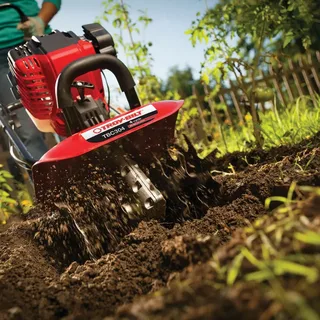A well-maintained garden tiller is essential for keeping your soil healthy and easy to work with. Whether you’re a seasoned gardener or a weekend hobbyist, regular upkeep ensures your equipment performs efficiently and lasts for years. This article explores essential garden tiller maintenance: tips to keep it running smoothly through every season.
Why Garden Tiller Maintenance Matters
Your garden tiller works hard breaking up soil, cutting through roots, and preparing your beds for planting. Over time, dirt buildup, worn parts, and neglected fuel systems can lead to breakdowns and decreased performance. Regular maintenance not only extends the life of your tiller but also helps it work more effectively when you need it most.
Pre-Season Checks
Before you start tilling in the spring, take time to inspect your equipment.
1. Check the Engine
- Change the oil if it hasn’t been replaced recently.
- Clean or replace the air filter.
- Inspect the spark plug and replace it if corroded or fouled.
2. Inspect the Tines
- Look for signs of wear or rust.
- Sharpen or replace tines to ensure effective soil penetration.
After Each Use
One of the simplest aspects of garden tiller maintenance: tips to keep it running smoothly involves cleaning.
1. Remove Dirt and Debris
- Use a hose or brush to clean off soil and plant material.
- Prevent buildup that can wear down moving parts or hide issues.
2. Check for Loose Bolts
- Vibrations during use can loosen nuts and bolts.
- Tighten any that appear loose to avoid mechanical failure.
Seasonal Storage Tips
Proper storage is key when your tiller will sit unused for months.
1. Drain or Stabilize Fuel
- Gasoline degrades over time. Either run the tank dry or add a stabilizer.
- This prevents clogging and keeps your fuel system clean.
2. Lubricate Moving Parts
- Apply oil to chains, cables, and any exposed metal to prevent rust.
- Cover the tiller to keep it dry and dust-free.
Troubleshooting Common Issues
If your tiller isn’t starting or is underperforming, some quick fixes might help.
- Hard Starting: Clean the carburetor or replace the spark plug.
- Poor Tilling Performance: Inspect and sharpen the tines.
- Strange Noises: Check for debris or loose parts inside the engine housing.
Keeping up with these basic tasks is part of smart garden tiller maintenance: tips to keep it running smoothly and safely.
Conclusion
Consistent and careful upkeep is the secret to getting the best performance from your equipment. By following these steps for garden tiller maintenance: tips to keep it running smoothly, you can ensure your tiller is always ready for action. A little time spent now saves a lot of hassle down the line.

